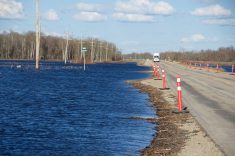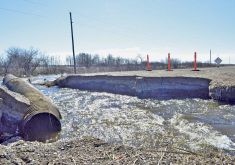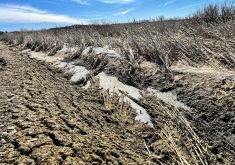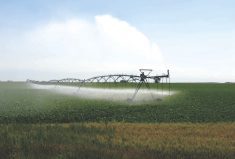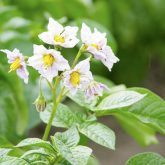A system to recycle tile drainage discharge is helping Kelsey Sunaert keep his field moisture levels just right.
The system, installed on Sunaert’s Deloraine-area farm, uses tile to reclaim flooded fields, but that water doesn’t disappear downstream. Instead, it is retained and used for irrigation later in the season.
“Not only do we get to farm those acres, but we get water to increase yields,” he told a tour group hosted by the Manitoba Soil Science Society in August. “We expect to see a yield bump this year on both pivots.”
Read Also
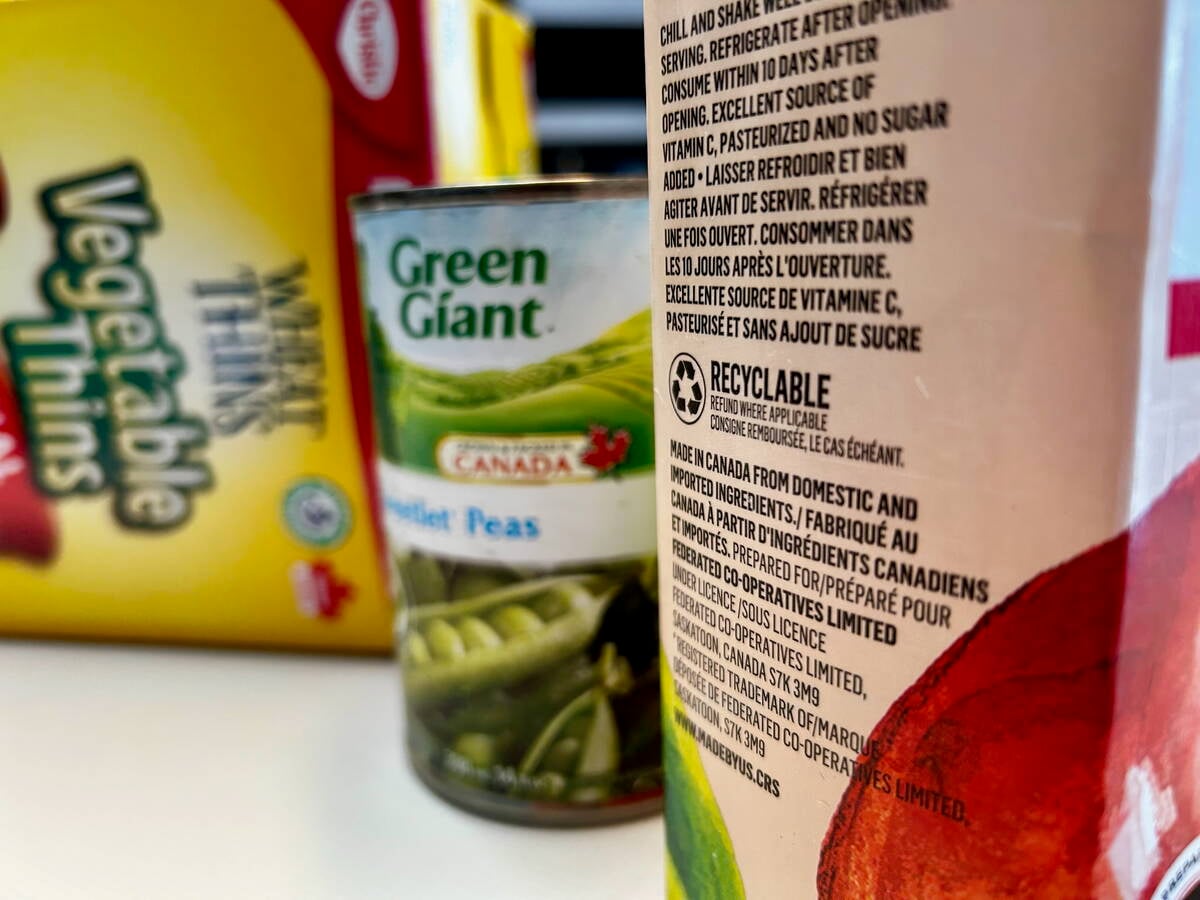
Unclear food labels hinder Canada’s ‘buy local’ surge
“Maple-washing” on Canadian food packaging makes label claims hard to keep straight and hurts both farmers and consumers trying to buy Canadian, economist says.
Why it matters: Moisture extremes such as the 2021 drought, which was followed by the critically wet spring of 2022, fostered more discussion on resilience in agriculture.
For farmers in the Deloraine area, Prairie pothole territory, both excess moisture and drought are significant limitations to crop production. Thanks to the rolling land, both can occur simultaneously.
Sunaert started farming with his dad in flood-plagued 2011. That year, they were able to plant only about 100 acres out of 3,000. Following another wet year in 2014, they bought an irrigation gun to use some of that excess water on crops. While Sunaert said it didn’t have enough power, yield maps showed improvement in the area under irrigation.
The next step was an irrigation pivot, used for the first time in 2018. Then they began installing tile drainage in low areas.
Sunaert said this allowed them to continue zero-till management while absorbing and using as much water as possible. They also hoped it would reduce workload in the long run, changing their approach to the low areas.
A lot of area producers mow or burn cattails in field depressions only to “the next year have them flood out again,” Sunaert said. “We wanted to stop that cycle.”
In 2019, he built a retention pond with a 20-acre-foot capacity in his farmyard. Previously, they’d irrigated directly from low-lying areas. Today, the farm draws from that reservoir and from a larger slough that holds about 60 acre-feet.
In 2023, they bought a second pivot. Both can be moved to target the highest-yielding fields that are also big enough for the equipment.
The middle ground
Tile drainage, while frequently lauded by Manitoba farmers as a tool to fix waterlogged fields and increase production, has not always been on friendly terms with conservationists.
Water quality issues have been one criticism of the practice, as well as its tendency to move water off the field quickly — a boon for farmers, but also something that can increase stress on local infrastructure.
Ashley Rawluk, policy advisor with the International Institute for Sustainable Development’s water and resilience programs, says thoughtful application of management practices can help, and that includes capturing and recycling the water.
“That seems like a really good approach,” she said of Sunaert’s irrigation.
The capture and recycle method also make sense given predictions that climate change will cause extremes of wet and dry, added Rawluk.
Controlled outlets for tile drainage — that is, outlets that can be open or shut so some water can be retained on the land — is another good practice.
The idea of recycling tile drainage water previously got the attention of the Prairie Agricultural Machinery Institute. It lists tile water recycling under its tile drainage best management practices.
The practice is “broadly applicable across agri-Manitoba,” the institute said in a 2018 fact sheet, and it also noted captured water can be used for livestock, irrigation or other farm needs.
Storing and recycling water likely eliminates concerns over washing nutrients into the municipal drainage system, PAMI added. However, pesticides from drained water could be a concern for recycling, and fields with salinity issues will produce tile drainage water with elevated salt levels.
If storing the water in a slough, as Sunaert is, the cattails may improve the water quality, Rawluk suggested.
All told, recycling tile drainage water through irrigation holds a lot of potential, she said, but she cautioned that more research is needed to understand how to get the best out of such a system.




